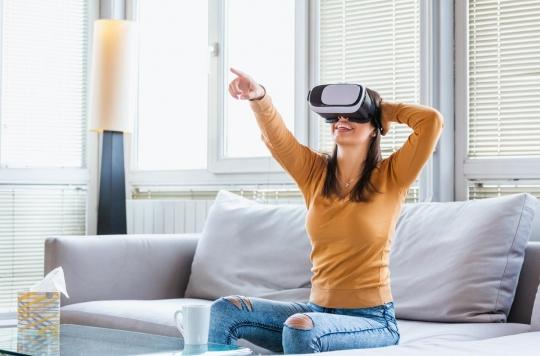Some people are more likely to develop adverse effects when using virtual and/or augmented reality technologies. According to a report by ANSES, it is therefore best to avoid them.

- An ANSES report to prevent risks – headaches, fatigue, dizziness, etc. – virtual and augmented reality.
- For certain audiences, in particular pregnant women, the use of these devices is not recommended.
Video games, virtual visits, medical treatment for a phobia or professional training: virtual and/or augmented reality offers more and more possibilities in different sectors of activity. The first is defined as an unreal world in which the user is completely immersed, while the second makes it possible to project fictitious elements into the real environment. Currently, there are three main supports: helmets, glasses and boxes connected to smartphones to be placed in front of the eyes. Over time, the use of these technologies has become more democratic and now affects very different audiences and age groups. But, according to the National Agency for Food, Environmental and Occupational Health Safety (Anses), these devices could have immediate and temporary adverse effects on the health of certain users. The instance has published a report on June 24 to warn the most sensitive people.
Cyberkinetosis and light radiation
ANSES distinguishes two main types of adverse effects from these virtual and/or augmented reality devices. First, cyberkinetosis. This is defined in the report as comprising “a set of symptoms that can be experienced during exposure to virtual reality: paleness, feeling sick, visual disturbances, disorientation, headaches, fatigue, dizziness and postural instability, nausea, vomiting, tachycardia, hypersalivation”. This phenomenon appears very quickly – approximately 5 minutes after the start of the virtual reality experience” and concerns between 30 and 50% of users. The people most exposed to this risk are in particular those suffering from motion sickness, migraines, individuals with anxious temperaments or prone to anxiety attacks or even pregnant women. On the other hand, the second side effect concerns light radiation. The most sensitive people are children, adolescents, young adults, people suffering from ocular pathologies or anomalies, sleep disorders or photosensitive epilepsy. Indeed, the blue light generated by LED screens can disrupt sleep and, in the most serious cases, trigger epileptic seizures in predisposed people. “The body makes a significant effort to adapt to the virtual world (…), which can cause some fatigue”, explains Dina Attia, scientific coordinator of the ANSES expertise, to Agence France Presse (AFP). It is therefore important to plan a rest period of an hour or two before resuming an activity requiring high concentration such as driving your car for example.”.
Some people should not use these technologies
In the ANSES report, there are a few tips on how to avoid these undesirable effects. For example, it is recommended to stop using these technologies as soon as symptoms such as nausea, dizziness or sweating appear. On the other hand, screens should be avoided at least two hours before bedtime, especially for children and adolescents. As for people with epilepsy, suffering from motion sickness, with balance disorders, those prone to migraines or even pregnant women, the ANSES report advises them to avoid the use of these technologies as much as possible. According to a survey carried out in 2019 by ANSES, the average duration of a virtual reality session was more than one hour. For adults, these are mainly activities related to their smartphone, while for children, virtual reality is mainly associated with consoles and video games.
.















